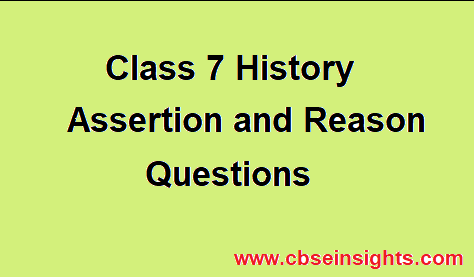
Q 1 – Assertion: The temple towns were the centers of social and economic activities.
Reason: Due to the financing of trade and banking the temple towns grew up.
(a) Both A and R are true and R is correct explanation of A.
(b) Both A and R are true but R is not correct explanation of A.
(c) A is true but R is false.
(d) A is false but R is true.
Q 2 – Assertion: The Saliya weavers of Thiruvananthapuram and the nearby town of Uraiyur were busy producing cloth for flags to be used in the temple.
Reason: The Sthapatis or sculptors were making exquisite bronze idols and tall ornament bell metal lamps.
(a) Both A and R are true and R is correct explanation of A.
(b) Both A and R are true but R is not correct explanation of A.
(c) A is true but R is false.
(d) A is false but R is true.
Q 3 – Assertion: Ajmer provides an excellent example of religious coexistence.
Reason: Pushkar and Khwaja Muinuddin Chishti attract pilgrims from all creeds and from ancient times.
(a) Both A and R are true and R is correct explanation of A.
(b) Both A and R are true but R is not correct explanation of A.
(c) A is true but R is false.
(d) A is false but R is true.
Q 4 – Assertion: Samanta, a Zamindar built a fortified palace in or near these towns.
Reason: The fortified palace is built to levy taxes on traders, artisans .
(a) Both A and R are true and R is correct explanation of A.
(b) Both A and R are true but R is not correct explanation of A.
(c) A is true but R is false.
(d) A is false but R is true.
Q 5 – Assertion: Manigramam and Nanadesi were the bamous guids in the North India . Reason: These guilds were formed to protect the interest of traders .
(a) Both A and R are true and R is correct explanation of A.
(b) Both A and R are true but R is not correct explanation of A.
(c) A is true but R is false.
(d) A is false but R is true.
Q 6 – Assertion: The Craftspersons of Bidar were famous for their inlay work in copper and silver and it came to be known as ‘Bidri’ .
Reason: Weavers such as the Saliyar or Kaikkolars emerged as prosperous communities, making donations to the temples.
(a) Both A and R are true and R is correct explanation of A.
(b) Both A and R are true but R is not correct explanation of A.
(c) A is true but R is false.
(d) A is False but R is true.
Q 7 – Assertion: The Craftpersons in the Sixteenth and Seventeenth centuries lost independence .
Reason: They lost their independence because now they were free to sell their own cloth or weaving their own patterns.
(a) Both A and R are true and R is correct explanation of A.
(b) Both A and R are true but R is not correct explanation of A.
(c) A is true but R is false.
(d) A is false but R is true.
Q 8 – Assertion: The Great Indian traders like Mulla Abdul Ghafur and Virji Vora used the Naval powers to gain control of the sea.
Reason: The trade activities necessitated the use of Naval powers.
(a) Both A and R are true and R is correct explanation of A.
(b) Both A and R are true but R is not correct explanation of A.
(c) A is true but R is false.
(d) A is false but R is true.
Q 9 – Assertion: The Surat hundis were honoured in the far off markets of Cairo in Egypt, Basra in Iraq and Antwerp in Belgium .
Reason: The Kathiawad seths or Mahajans (moneychangers) had huge banking houses at Surat.
(a) Both A and R are true and R is correct explanation of A.
(b) Both A and R are true but R is not correct explanation of A.
(c) A is true but R is false.
(d) A is false but R is true.